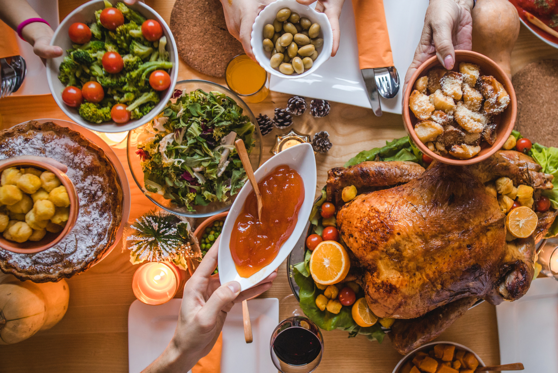There are several places in the United States that have the same names as either the holiday’s traditional feast or the early colonists’ arrival to the New World.
How many colonists were there? The estimated population in 1620 was 2,499 according to this table on page 25 of “Historical Statistics of the United States,” published in 1949 by the Census Bureau.
The legacy of thanks and the feast have survived centuries since the event became a national holiday on Oct. 3, 1863, when President Abraham Lincoln proclaimed the last Thursday of November as a national day of thanksgiving.
Decades later, President Franklin Roosevelt officially declared that Thanksgiving should always be celebrated on the fourth Thursday of the month to encourage earlier holiday shopping.
Fun Facts
There are several places in the United States that have the same names as either the holiday’s traditional feast or the early colonists’ arrival to the New World.
Seven share the name of the centerpiece of most Thanksgiving meals — the turkey — and have tiny populations:
- Turkey city, Texas, (pop. 339)
- Turkey Creek Census Designated Place (CDP), Ariz., (489)
- Turkey Creek township, Stone County, Ark., (316)
- Turkey Creek township, McPherson County, Kan., (343)
- Turkey Creek village, La., (424)
- Turkey town, N.C., (242)
- Turkey Valley township, Yankton County, S.D., (167)
Five places are named after the popular Thanksgiving side dish of cranberries:
- Cranberry Lake CDP, N.Y., (157)
- Cranberry township, Alleghany County, N.C., (155)
- Cranberry township, Avery County, N.C., (534)
- Cranberry township, Butler County, Pa., (30,132)
- Cranberry township, Venango County, Pa., (6,465)
Three are named after the Mayflower, the English ship that brought the first Pilgrims to the New World:
- Mayflower Census County Division (CCD), Pike County, Ky., (3,191)
- Mayflower, city, Ark., (2,218)
- Mayflower Village CDP, Calif., (5,828)
Two counties have Plymouth in their names as in Plymouth Rock, the landing site of the first Pilgrims:
- Plymouth County, Iowa, (25,027)
- Plymouth County, Mass., (509,114)
Two places are named Pilgrim:
- Pilgrim CDP, Mich., (52)
- Pilgrim township, Dade County, Mo., (79)
Thanksgiving is a good time to reflect on how our founders enshrined in the U.S. Constitution the importance of statistics as a vital tool for measuring our people, places and economy.
Many facts come from Census Bureau surveys.
- There were 122.7 million occupied housing units across the nation in the third quarter of 2019. Alas, no statistics on how many will host family gatherings and Thanksgiving feasts.
- Multigenerational households, those with three or more generations, numbered 4.6 million in 2018. The highest concentration is in California.
- Just 53 pilgrims celebrated the fall harvest, an English tradition, in the New World in 1621. In 2018, some 22.8 million people in the U.S. reported English ancestry. The number in Massachusetts was 607,612.
- The first Thanksgiving included 90 Wampanoag Indians. The 2010 Census counted 6,500 members of the Wampanoag American Indian tribal grouping.
Next year, the 2020 Census plans to count every person living in the United States, including American Indians. Every person counted should report race by marking one or more boxes AND print ethnic origins. American Indians may print the name of enrolled or principal tribe(s). Here is a sample copy of the 2020 Census Questionnaire.
Derick Moore is senior communications specialist at the Census Bureau.






